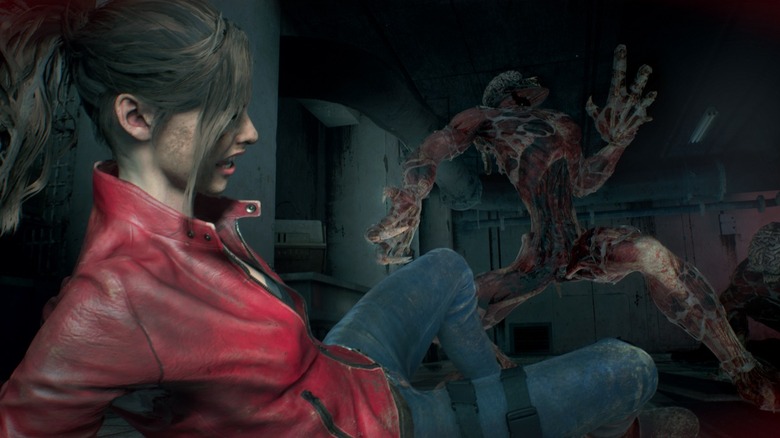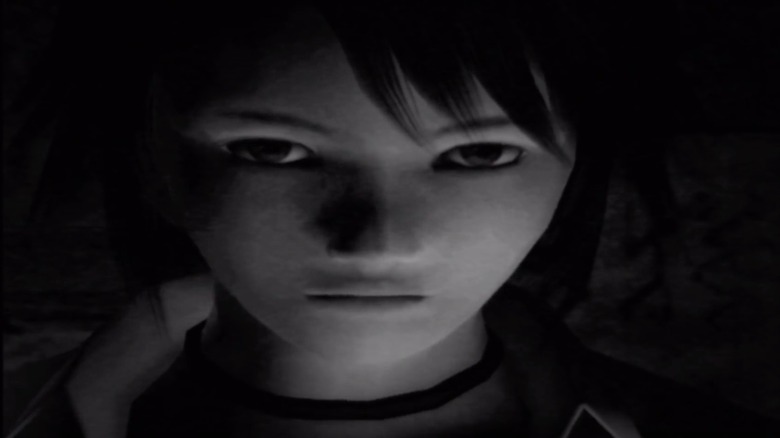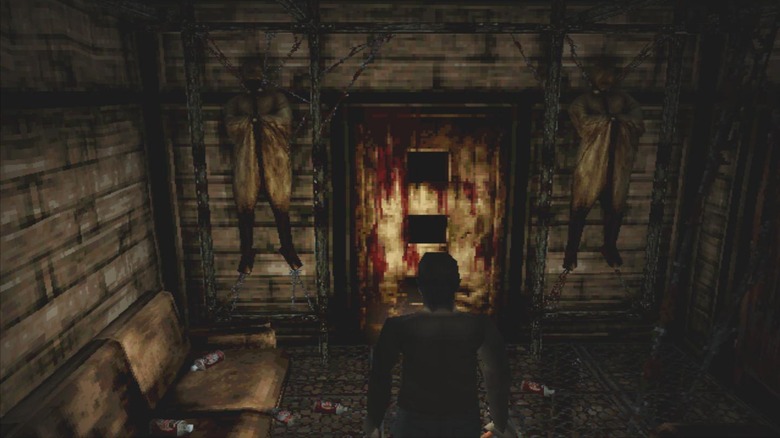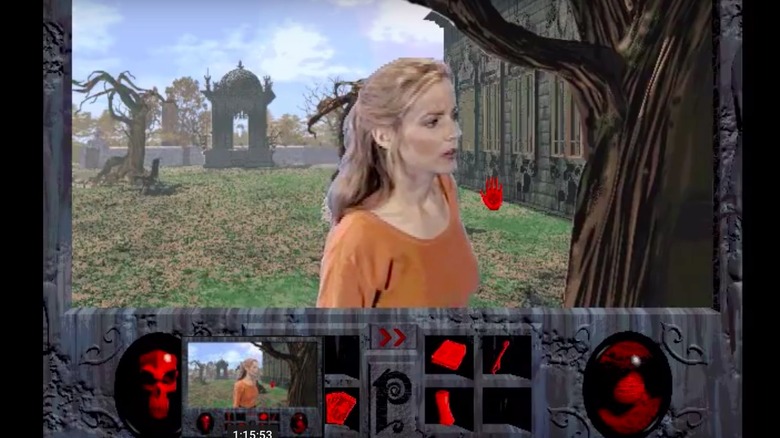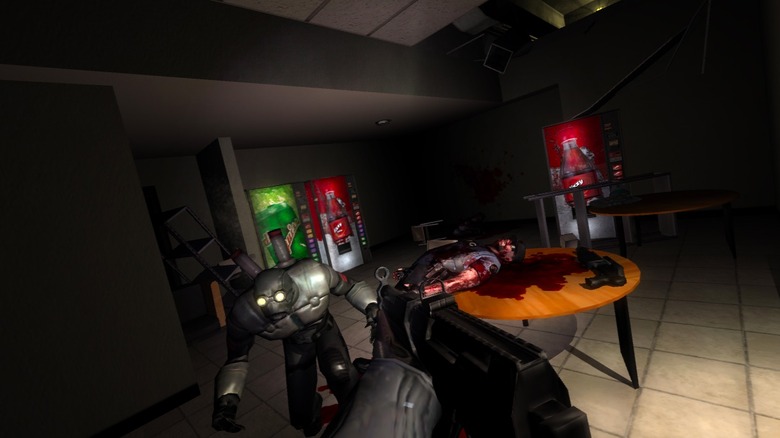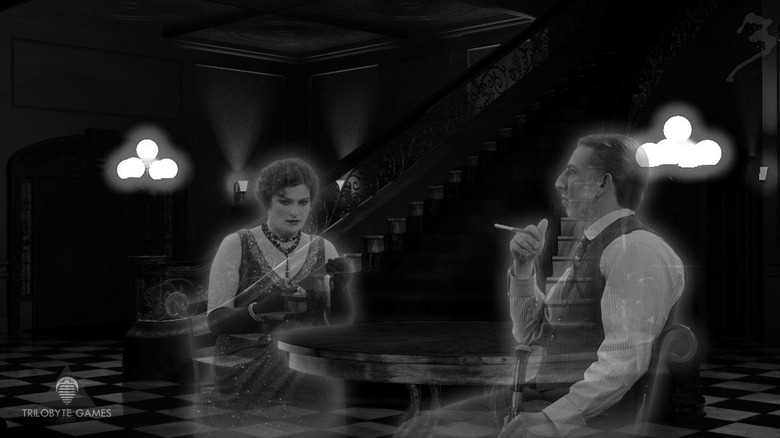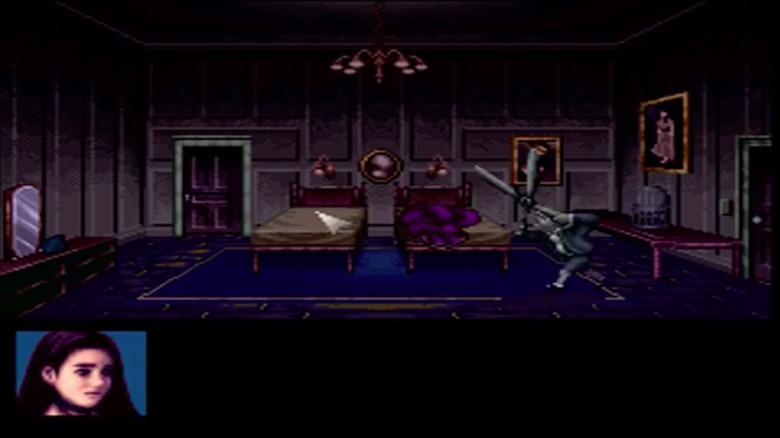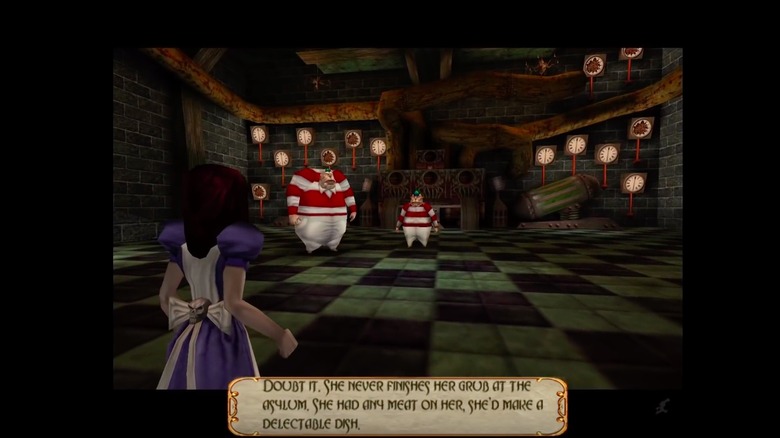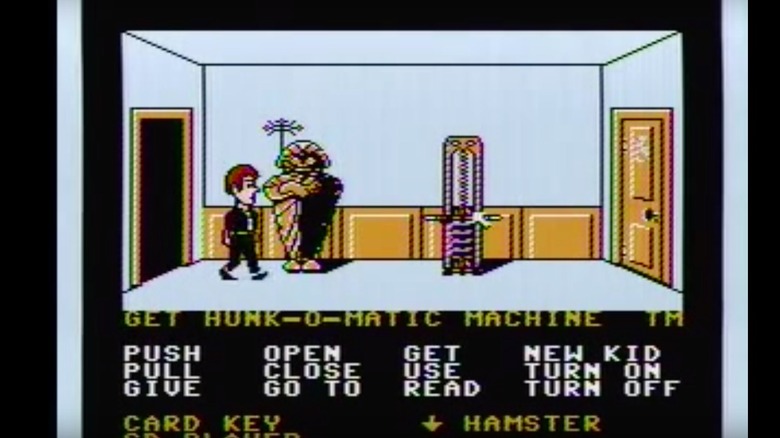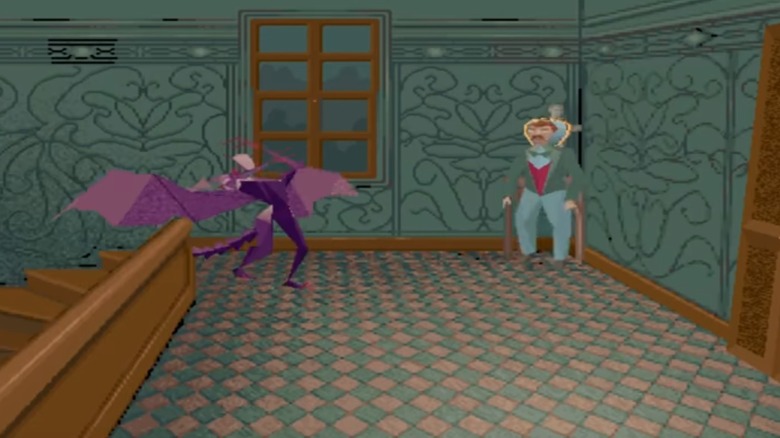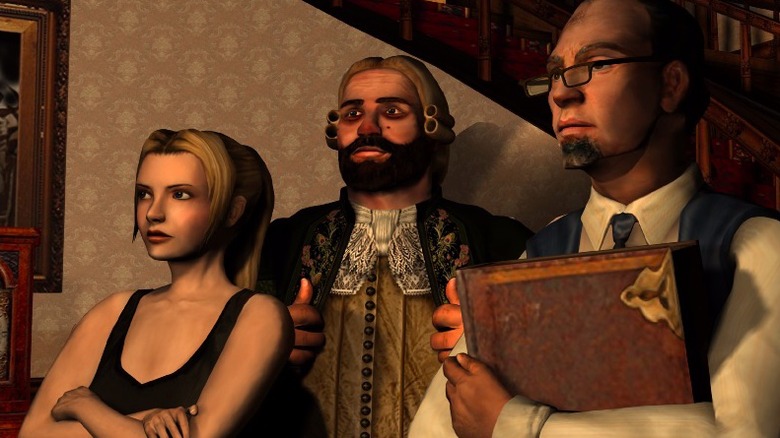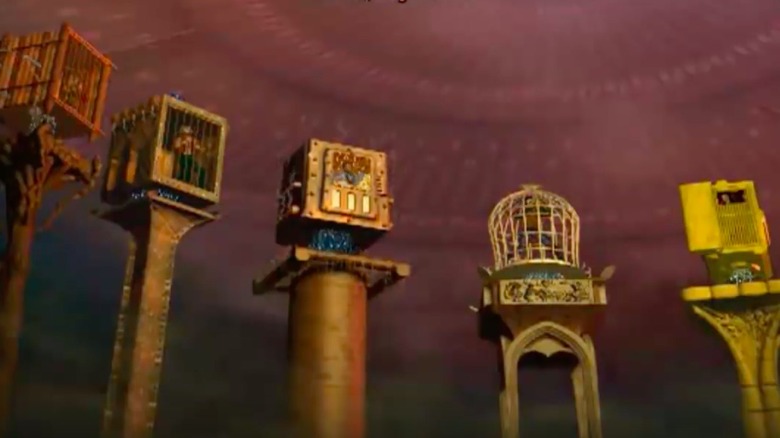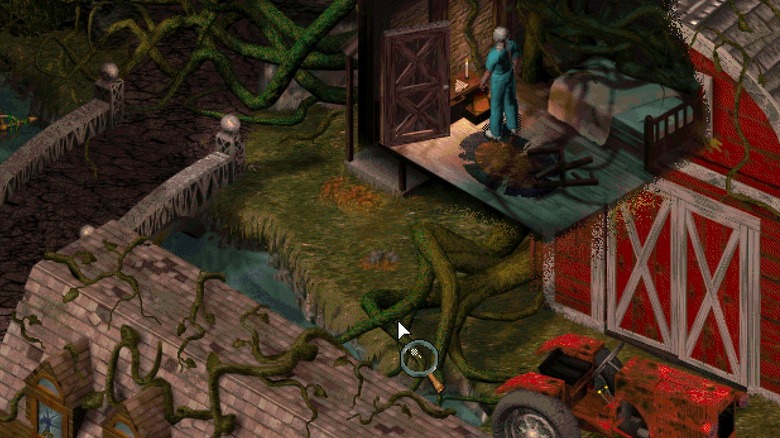Horror Games That Need The Resident Evil 2 Remake Treatment
The gaming community is constantly looking for the next big thing. 3D games brought about a need for a more expansive world, while the recent rise in the popularity of VR is now testing the boundaries of the horror experience. But while there are always new and exciting advances in gaming, there's also something to be said for nostalgia. Many people grew up playing video games and have fond memories of games from the past. And while it's fun to remember games we played as kids, it's easy to forget just how clunky and counter-intuitive many of these games were.
Going back to replay a game that you haven't played in years can often show you just how badly it's aged. Whether that's due to a premise that was only relevant at the time of release, or game mechanics that would render a game unplayable by today's standards, there's no question some of our old favorites could use a facelift. With the release of the remade Resident Evil 2, we can't help but admire the kinks that have been ironed out of the original game. Looking to this for inspiration, here are some horror games from our past that we'd love to see given the Resident Evil 2 remake treatment.
More megapixels for Fatal Frame
There are many instances in which a favorite game from the past could benefit from a reboot with modern technology, and Fatal Frame is one of those. Even with the limitations of technology at the time this game was released, it still managed to do a lot right. The game built tension and managed to unsettle audiences effectively by suddenly switching perspectives when the camera was used. But even with all that, there are many aspects that could use an update with 2019's technology and conventions.
If you were to take the best parts of the Fatal Frame and give it a few minor tweaks and upgrades, there's no telling how immersive and frightening the finished product could be. Even if not considered one of the "best" horror games, it is often included as one of the scariest. With updated graphics and the removal of fixed camera angles, this game could easily step into those upper ranks. A free-roaming camera would allow game developers to create gorgeous photorealistic levels that really immerse the player. Any mystery that was lost by removing fixed camera angles could be returned with the addition of blind spots and environmental effects like fog or limited light. Though Fatal Frame was already a fantastic game when released in 2001, it can only benefit from getting an upgrade.
Silent Hill could live again
One of the most recognizable horror games is the Silent Hill franchise. While there have been games in the series that are almost too perfect to be improved, there is something to be said for updating the first title. The clunky nature of Silent Hill, commonplace when it was released in 1999, now makes the game almost unplayable.
While Silent Hill is an amazing game for its era, it could benefit from a facelift. One of the biggest complaints from those who have played it recently is that the controls are not only counter-intuitive, but constantly changing based on what camera angle you're seeing. Add to that a story that could have been much more complex than it was, and you've got a game that could be vastly improved with only a few tweaks. If Silent Hill was to receive a remake, developers would have no problem taking something dated and crafting it into a masterpiece.
Less FMV could make Phantasmagoria an instant classic
Resident Evil and Silent Hill are often the first games that come to mind when listing the great horror games of the early '90s. But one game that often gets forgotten, despite its massive scale, innovative gameplay, and use of FMV (full-motion video), is Phantasmagoria. This point-and-click horror game was filled with content so shocking that it was banned in several countries. The fact that all of the characters in the game are portrayed by real actors and the violence is shown in live-action cutscenes only adds to the uncomfortable level of realism that took the mature content of this game just a step too far.
Phantasmagoria is one of the many horror games that could benefit hugely from a Resident Evil 2 type of remake. While the FMV utilized in this game was innovative and impressive at the time, it now looks hilariously dated. Reimagining this game with CGI avatars and photorealistic graphics rather than overly scripted scenes with live-action actors could take the story out of camp territory and into the truly frightening. Rewriting the script just a bit to allow more control over the storyline and outcome of the game would also give Phantasmagoria the extra push it needs to stand out as one of the most impressive horror games of all time.
A few minor tweaks could improve F.E.A.R.
When Monolith Productions' survival horror game F.E.A.R. was released in 2005, it quickly set itself apart as a smart horror game that pulled from the Japanese horror movie genre to create truly unsettling scenes. Centering on the story of a special operations unit called F.E.A.R. or First Encounter Assault Recon, which has been sent in to contain a paranormal anomaly, F.E.A.R. utilizes a dark atmosphere and jump scares to its advantage. Though the graphics are good for a game released in 2005, they could still use updating to creating a gaming experience that is something akin to Resident Evil 7 in being almost too real.
Though the storyline of F.E.A.R. wouldn't need to be changed much to bring it up to modern standards, fleshing out some of the backstories would only add to the high-stakes feel of the game. Allowing for custom control configurations and tweaking the reflex time mechanic to be more visually appealing could bring F.E.A.R. up to speed. The fact that this game already provides a solid base for a great experience makes this one a no-brainer.
The 7th Guest could become the classic it was meant to be
Horror games and puzzles have long been combined to create an experience that is both scary and challenging. When The 7th Guest was released in 1993, the horror game became something of an instant classic. Despite its many shortcomings, The 7th Guest proved that puzzle solving and fear were a perfect combination.
Though The 7th Guest was largely heralded as a groundbreaking and exciting game by critics at the time of its release, there are so many things a remake could provide that would only further cement this title as a classic. The widely used FMV in this game didn't age well and only made for a clunky gaming experience. By ditching the FMV and live-action cutscenes for photorealistic CGI, gamers wouldn't be taken out of the experience by the shock of an out-of-place live actor. A total rework of the graphics and mechanics would also make it that much more palatable, and rewriting much of the dialogue would help take some of the cringey moments out. Even though the kitschy nature of the game is part of its charm, it wouldn't be a terrible idea for developers to tone down the cheese and up the creepy atmosphere.
A graphics upgrade could only make Clock Tower more terrifying
1995 point-and-click survival horror game Clock Tower is a classic in the horror genre in its own right. The pixelated graphics and slow-burn storyline have done little to deter people from still enjoying this game. However, there are still many ways this classic could be remade to make it more appealing to a wider audience. The tension in the game is already palpable, the soundtrack isn't overbearing, and the overall silence present through most of the story make it that much more terrifying when something does happen. But a reimagining of this game with updated graphics and a free-roaming camera could create a new kind of tense horror.
With the things Clock Tower got right combined with the improvements a remake could provide, this game could reach a new audience who may not have had the patience or interest in a game that is quite dated. By utilizing silence and the iconic and still-terrifying-to-this-day Scissorman who chases you relentlessly throughout the mansion, Clock Tower would only need minor rehabilitation to bring it up to the standards modern gamers expect from their horror. The possibilities provided by current graphics could give this game the added atmosphere it needs to accompany the slow-burn tension that made it a classic in the first place.
American McGee's Alice could double-down on the terror
Alice in Wonderland isn't typically the first thought that comes to mind where great horror is concerned. The story itself may hold some frightening and sometimes disturbing scenes, but there's nothing inherently horrific about it. That is, until American McGee's Alice was released on PC in 2000. This reimagining of the classic Alice story is set years after the tales we're familiar with, beginning with Alice in a psychiatric hospital after the death of her parents.
The atmosphere and ominous tone of this game were impressive back during its initial release, and the potential for a truly terrifying horror game for the modern era is real. Cleaning up the graphics, changing the gameplay from third- to first-person, and adding a few more intricacies to the plot would be a great starting point.
The fact that American McGee's Alice could evoke such dark atmosphere with such limited graphics only shows how impressive the tone and narrative of the story were. With some added help from modern technology, this reimagining of Alice in Wonderland could terrify a whole new generation of gamers.
The self-aware Maniac Mansion is still unique
It's endearing when developers poke fun at the genre they've dedicated their work to. Maniac Mansion pulls no punches when it comes to self-awareness. This game, released in 1987 by LucasArts, knows exactly what it is and embraces that wholeheartedly. Rather than trying to overcome the horror stereotype of taking itself too seriously, Maniac Mansion takes the genre's tropes to the next level to show just how ridiculous they are.
Maniac Mansion is often cited as the game that launched the point-and-click genre and was quite ahead of its time with a choice system that determined what kind of ending players received. The dialogue and characters were hilarious, and it's no wonder this game developed a huge following. While Mansion wouldn't need much revision for its dialogue, story, or characters, being able to play Maniac Mansion with modern graphics and over-the-shoulder control would make this classic one of the most unique and unexpectedly entertaining horror games to date.
Alone in the Dark is surprisingly light and ready for a remake
In 1992, a survival horror game created by Infogrames broke conventions and, in turn, influenced what horror games have become today. Alone in the Dark was one of the first survival horror titles to utilize static backgrounds and camera angles in a 3D world where the player could explore what they could see on screen. The mechanics found in Alone in the Dark are often cited as one of the main influences for Resident Evil.
Much like the way the familiar domestic space in Silent Hill P.T. elicits fear because of the feeling that it's a space you've been in before, Alone in the Dark doesn't take players to a remote planet or an abandoned location that they'd never actually visit. Instead, it takes place in a well-lit house, relying on fixed camera angles to hide the horrors. But just like Resident Evil 2, Alone in the Dark could see some serious benefits from remaking the inventive original game. Getting rid of fixed camera angles, improving small aspects of the story, and touching up the art design could take a game that was a pioneer in its own time and bring it into the 21st century for a new audience to experience.
Eternal Darkness was already ahead of its time -- so it should be remade for this time
Utilizing multiple playable characters and branching storylines over decades may seem like a daunting task for a game, but somehow, Eternal Darkness is able to pull it off. In the 2002 release, players have the opportunity to play as 12 different characters, each one belonging to a different time period and possessing different talents. This unique approach to the horror genre was innovative for the time, and so well executed that it sets the game apart as a fresh new take on the genre. Eternal Darkness was utilizing sanity effects long before it was a horror staple. Eternal Darkness feels like a game made much later than it actually was.
Of course, with poor graphics and clunky mechanics, Eternal Darkness has started to show its age. In the era of realistic characters and settings, a pixelated game doesn't hold its own anymore. If Eternal Darkness were able to receive an update, its already-interesting storyline would only get better and more playable. Combat and spells would only need minor adjustments to smooth out kinks as these elements were both done quite well in the original game.
I Have No Mouth and I Must Scream needs to be played to be believed
In today's gaming environment, moral dilemmas are seen almost everywhere. It's one of the most common story mechanics for determining what ending is received. Though this is all too common today, the 1995 horror game I Have No Mouth and I Must Scream was far ahead of its time, utilizing a choice system that wasn't often seen back then. Set in a post-apocalyptic world where computers have taken over and only five humans are left in existence, this game is centered around those five humans and the fatal flaw that each one of them carried.
Though I Have No Mouth and I Must Scream was made available once more in 2013, the game has yet to receive a full remake. Focusing on psychological horror over blood and gore, I Have No Mouth is a bit contrived and hollowly dark despite its other merits. By updating the graphics on this game and reworking the story, I Have No Mouth could be a truly horrific work of art. If game developers could flesh out the only female character to give her some depth, and give more realistic backstories to the male characters, this game could be a modern-day masterpiece that players truly connect with.
Sanitarium is like if Myst and Memento had a baby
The premise of being an amnesia patient in an institution is a trope that's been beaten to death. But when done correctly, this can actually be quite effective in creating a tone of ominous isolation and loneliness. The melancholy feel of Dreamforge's 1998 release, Sanitarium, is the perfect example of the trope done correctly. Sanitarium was able to change it up by dragging players back and forth from reality to insanity and back again. This kept them on their toes and engaged in the storyline.
Just as with any older game, however, there are certain aspects of Sanitarium that didn't age well and date the game in an unflattering way. The puzzles found in Sanitarium could use a facelift. Though the puzzles aren't overly easy or overly difficult, they could easily be reworked without the limitations of older mechanics, thus providing players with a more intuitive yet challenging experience. Building smarter puzzles would only be doing Sanitarium a favor.

